It is Sunday, and it means only one thing – another part of the Automaker Profile series. Who do you think is the best-selling Chinese car brand in its home market? Geely? Wuling? BYD maybe? No, that’s all wrong. In the first half of 2021, Changan was China’s biggest brand. To celebrate the achievement, part two in the Automaker Profile series is about the company from Chongqing.
For those of you who missed the first part about Nio, you can read it here.
Guns ‘n Ammo
On its website, car manufacturer Changan traces its own history back to the year 1862. That is more than 20 years before Karl Benz invented the car. Of course, more companies first made other products before they ventured into cars, but Changan pushes the limit. Only over a century after the Benz Patent Motorwagen, the Chinese company gets serious about car production.
So what important stuff went down in 1862 that the brand considers its roots? Well, in that year, Li Hongzhang founded the Foreign Gun Bureau in Shanghai. Li Hongzhang was a politician and army chief in the last imperial dynasty that ruled China, the Qing dynasty. At the time, that dynasty had to contend with internal unrest, European settlers, and Japanese invasions, so a steady influx of weapons and ammunition served them well. The Shanghai Federal Gun Bureau was established to import all kinds of weaponry from abroad. Li Hongzhang was also quite an interesting figure who influenced Chinese history, but after the establishment of the arms trade, he had little more to do with it. If you are interested in the man, I refer you to Wikipedia.

Circumstances forced the arms trade to first move to Suzhou and then to Nanjing, where the company changed the name to Jialing Machinery Manufacturing Bureau. In addition to the arms trade, it also took up production there. In the war with the French (1884-85) and the first war with the Japanese (1894-95), the Jialing arms factory was an important supplier to the Qing dynasty.
In 1937 the Japanese invaded China again, and then they manage to occupy a large territory, including Shanghai, which is not too far from Nanjing. For security reasons, the arms factory is once again moved to the city of Chongqing in central China. The factory will be known there as 21st Arsenal. After the Second World War, the Japanese disappeared from the scene again, and in 1949 the communists took power in China. These place the 21st Arsenal under the control of the Ministry of Military Industry, which in turn is part of the People’s Liberation Army (PLA). The Arsenal also gets a new name: Central Ordnance General Administration’s 456th Plant.
So we are still talking about a weapons and ammunition factory here, but at the end of the 1950s, the 456th PLA factory builds cars for a while. Initially, they assemble some Willy’s Jeeps from captured vehicles and parts, but the factory also develops its own design based on the iconic Jeep. In 1957 the production of an off-roader called Changjiang 46 starts, and to celebrate the vent, the company’s name changes again. Henceforth it will be called Changan Machinery Manufacturing Plant.
Changjiang built the off-roader in 1963, and a total of 1,400 copies roll out of the factory. Then the whole production line is packed and moved to Beijing. The Changjiang continues to be produced there, but now by Beijing Automobile Works and forms the starting point of Beijing Auto’s history. The Changjiang is the predecessor of the iconic BJ212, which is produced until today. Changan itself returns to arms production.
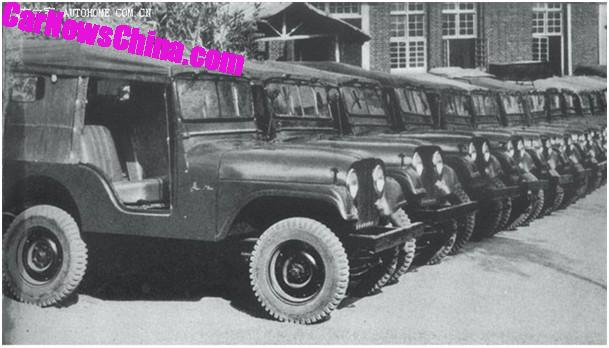
At that time, those in power divided the Chinese defense industry into five major groups (weaponry, shipbuilding, aircraft construction, aerospace, and nuclear technology), each with an umbrella holding company. In Changan’s case, it’s the China Ordnance Industry Corporation, which handles arms production. Incidentally, that holding should be seen in the light of the Chinese planned economy. It is controlled by the PLA administration and influences the distribution of money, resources, and tasks but does not directly control the dozens of companies and factories located throughout China.
The times are changing
In the 1960s and ’70s, China fell into a period of civil unrest, political assassinations, economic decline, and finally famine, as a result of Mao Zedong’s ‘Cultural Revolution’, the policy to rid the country of all revisionist thinking and establish a communist society according to Mao’s Little Red Book. These were hard times for ordinary citizens but great times for the weapons industry. After Mao died in 1976, more moderate leaders control the Communist Party, and things start to change rapidly.
The new leaders restore calm and peace and instigate sweeping economic modernization. It’s good news for most Chinese, except for the weapons industry. That business goes into decline, and the China Ordnance Industry Corporation is looking for other options to keep their factories running. In the early 1980’s it reaches an agreement with car manufacturer Suzuki about the licensed production of Japanese cars for the local market.
The agreement is shared with another group in the defense industry, China Aviation Industry. Both groups distribute the license across many of their factories. The weapons division will make Changan, Huaihai, Qinchuan, Jiangnan, and Jiangbei Suzukis, while the aviation companies will make the cars in the Changhe, Yunque, Hafei, and Dongan factories. In addition to this list of licensed builders, several companies make illegal copies. They all tend to make the same two Suzukis: the 2nd-generation Alto or the 8th-generation Carry/Every.
Building a corporation
It soon becomes clear that amongst those factories, Changan is taking the lead. The military command merges Changan with another weapons maker with a very similar history, the Jiangling Machinery Manufacturing Plant, which will produce engines. The joint company is called Changan Automobile Group, the first step in becoming a real automaker. Trial Production begins the late 80s, and from about 1989, the Carry by Changan goes on sale in China. So to come back to the opening paragraph, that’s 130 years after establishing the Shanghai arms trade. Decide for yourself whether the Changan website exaggerates the ‘heritage’ of the brand a bit.
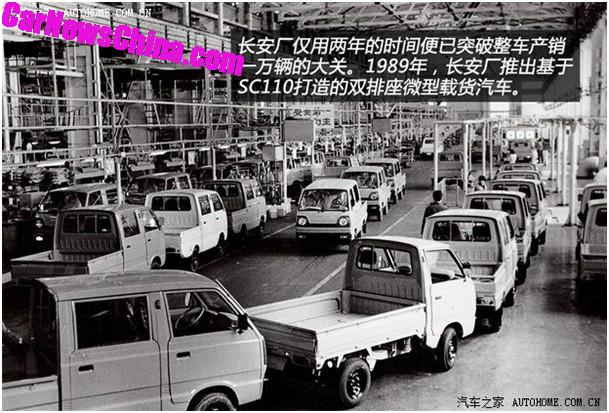
In the next years, Changan starts building a corporate structure. The first development is a joint venture with Suzuki that I will address shortly. In October 1996, Changan Automobile Group established an intermediate holding company called Chongqing Changan Automobile. An important part of the automotive activities is housed, including the joint venture with Suzuki. This intermediate holding is then floated on the Shenzhen Stock Exchange in May 1997, with Changan Automobile Group trading approximately 32% of its shares. Suzuki is one of the buyers.
Let’s go back to the defense industry for one last time. As mentioned, the Chinese government had clustered the industry into five groups, but at the end of the 1990s, it thought it was time for a thorough reorganization. To increase the efficiency and speed of innovation, each of the five groups is split into two parts, which have to compete with each other. The China Ordnance Industry Corporation is divided into China North Industry Group Corporation and China South Industry Group Corporation. Changan becomes part of the ‘southern’ part. It might be worth noting that China-South is still active in the arms industry, but Changan’s cars and Jialing’s motorcycles (another company in the group) are just as important. In addition, China South is also active in robotics, solar panels, and medicine, just to name a few things. To be clear, the China-South Group is still wholly owned by the Chinese central government.

About ten years later, the Changan company gets its current structure. At the time, the company wants a part of China’s fast-growing passenger car market with its own brand. It builds a new factory in Nanjing, and at the end of 2005, a reorganization and recapitalization of the company follow. China South Industries Group creates a new daughter organization, China Changan Automobile Group, that acquires all shares in Chongqing Changan (the car-producing entity) from the existing holding Changan Industry Group. China Changan thus becomes the new controlling shareholder of Chongqing Changan and its extensive network of companies in parts manufacturing, financial and commercial services. The ‘old’ Changan Industry Group still exists, but now mainly focuses on the defense industry, while it also continues to make some auto parts.
At the end of this article, I’ve added a corporate chart explaining Changan’s corporate structure.
Changan and Suzuki
Suzuki quickly discovers Changan is doing a thorough job, and the two parties form a full-fledged joint venture in June 1993, which includes a newly built factory. The first result is that Changan will also build the Alto. The cars are badged Changan–Suzuki and carry type designations like City Baby and Happy Prince. The Swift is added to the line-up not much later, but it is only provided with Suzuki logos.
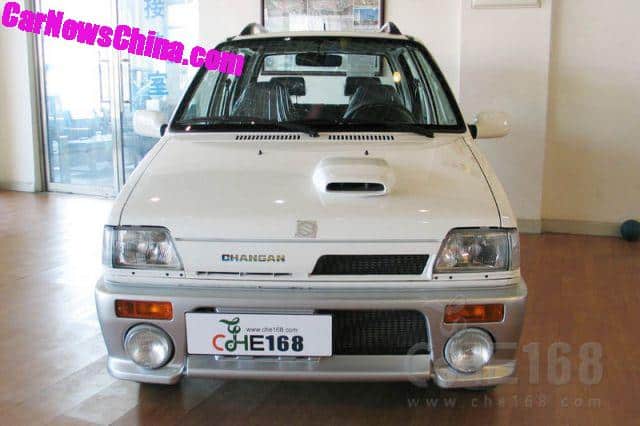
The next passenger cars are all sold through the Suzuki sales channels, while the Changan Alto continues until 2008. In the minivan department, things are different. Changan utilizes Suzuki technology but creates its own design and bodies and sells the cars under the Changan brand. The first such car is the Zhixing (or Chana Star in export markets). The range will eventually sprawl into a large number of different variants and sizes. The minivans are a great commercial success.
The production of commercial vehicles is further expanded through a joint venture with the Kuayue real estate group, also based in Chongqing. Changan Kuayue operates in the budget market with very cheap minivans and mini trucks, often based on older Changan models.
To solidify its leading position in the small commercial vehicle field, Changan took over the entire automotive industry from the China Aviation Industry in 2009. These are Changhe, Hafei, and Dongan. As we know, Changhe and Hafei are two of the car manufacturers that also started building Suzuki’s under license. They also mainly make variants of the Carry. Changhe, like Changan, even has a full joint venture with the Japanese. Dongan does not make cars but is the engine factory for Hafei and various other Chinese manufacturers.
The marriage between Changhe and Changan is tense from the start. Changan management plans to merge the two joint ventures with Suzuki and integrate Changhe’s own production into the parent group. Changhe’s managers don’t like the idea and are fiercely resisting. This leads to a long and heated quarrel between the two managements. Ultimately, the Jiangxi provincial government, where Changhe is located, forces a solution. Changhe is detached from Changan in 2013, after which Jiangxi Province largely sells the company to BAIC Group, where it seems to have a healthy future.
The takeover of Hafei is not going much better, at least for the company Hafei. Soon after the takeover, the Hafei car brand is dissolved by Changan management, and the parent company takes over the freed production capacity. The largest plant in northern Harbin is assigned to the Changan’s joint venture with Ford.
For Dongan, the takeover is a much happier affair. The company mainly makes smaller engines (up to about 1.5 liters), of course initially based on Suzuki technology, and grows under Changan into an important player in the market. Today it supplies engines to all kinds of Chinese manufacturers.

The joint venture between Changan and Suzuki operates quite successfully for almost 25 years, but in 2018 the Japanese brand suddenly decides to leave the Chinese market entirely. They sell back their share in the joint venture to Changan but grant the Chinese permission to produce several models (S-Cross, Vitara, and Alivio) under license until 2023. China Changan transfers more than half of its shares in Chongqing Changan to parent company China South Industry Group to finance the stock buy-back. As a result, China South becomes the controlling shareholder of the Changan car company.
Changan and Ford – Mazda
In 2001 Changan expanded passenger car production by entering into a joint venture with Ford Motor Co. Initially, the joint venture produces the Fiesta, quickly followed by the Mondeo and Focus. Over time Ford gradually adds more models, including popular crossover vehicles and even the ‘only for China’ Escort.
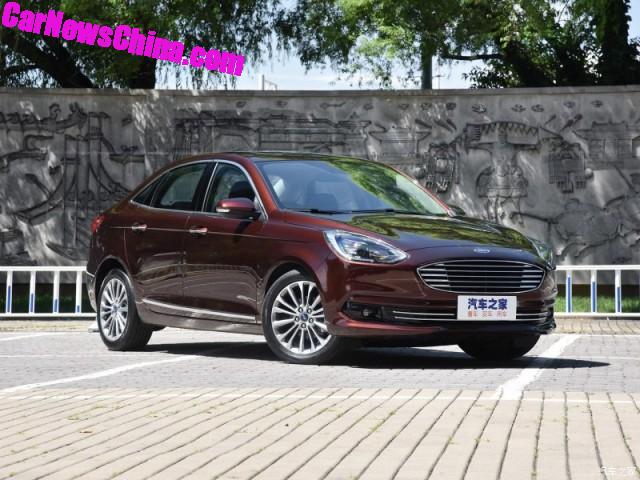
At the time, Ford is still part-owner of Mazda, so the joint venture also starts making the 2- and 3-series from the Japanese. These cars share their platform with the Ford Fiesta and Focus, so it’s a logical progression. Ford even adds a third Focus-derivative, the Volvo S40, and later the Mondeo-based Volvo S80.
During the credit crisis of 2008, Ford gets in financial difficulties and is forced to sell off several subsidiaries. That includes Volvo and Mazda. Volvo is, of course, taken over by Geely, so Changan’s involvement with the brand is short-lived, although the S80 is produced for a while after Volvo changes hands.
Ford and Mazda went their separate ways in 2012. This is also reflected in China. Mazda is removed from the joint venture with Ford but immediately starts its own new joint venture with Changan. As a result, the various models remain in production during the transition in January 2013.
Ford recovers quickly from the economic downturn, and the brand does quite well for a while in the Chinese market. It even adds another model, especially for China, the Taurus, a nameplate that the company dropped in its home market. But the good times do not last. Around 2018 Ford sales start to drop significantly. The company needs to revive its line-up and introduces more SUVs. In 2020 the production of the first Lincoln model starts in China, and two more up-market models follow it. So far, the Chinese-built Lincolns are quite successful commercially.
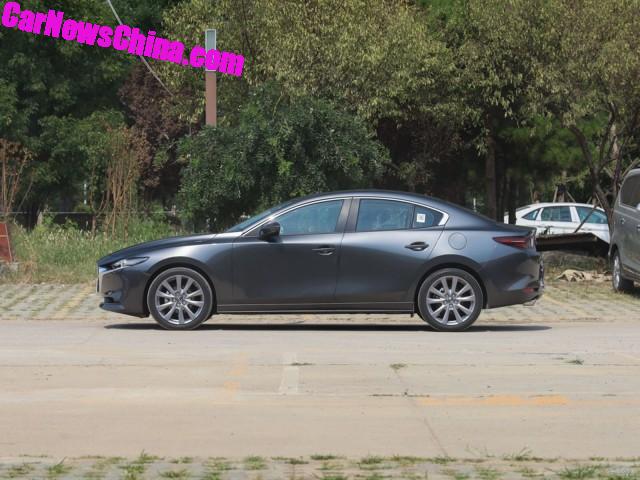
The joint venture with Mazda is a rather low-key affair. The company mainly produces the Mazda3 Axela and the CX-5. Mazda’s more important joint venture in China is with FAW, making the Mazda6 and several crossovers. But lately, Mazda has sees its sales drop off, and some rumors are going around that the Japanese intent to merge the two joint ventures. We’ll see what comes of that.
Changan and PSA
In 2011 Peugeot-Citroen spun off DS as a separate brand, and China is the main target. Although Dongfeng builds the French cars for China, PSA chooses Changan for the DS brand and sets up a new joint venture. A new factory is being built in Shenzhen, and initially, the introduction of the quirky DS models is fairly successful.

However, the success doesn’t last. PSA makes quite a mess of its operations in China, and the once very well-known brands Peugeot and Citroen are declining quickly from 2018 onwards. DS is pulled down with it to the extent that PSA no longer sees any future in its joint venture with Changan. In 2020 Changan and PSA sold the whole operation to a Hong Kong-based real estate group called Baoneng. Baoneng Group had already acquired the Qoros brand and will produce those cars in the Shenzhen factory. Meanwhile, it continues to make some DS models for PSA, including the brand new DS9.
Incidentally, the cooperation between Changan and PSA is not completely over. The two companies have jointly developed a pickup truck in recent years. It is marketed in China by Changan Kaicheng, but a variant with Peugeot badging will be sold in South America.
Changan self-branded cars
With all the talk about joint ventures, you might wonder where Changan’s own cars are. Yes, I’ve mentioned the self-developed light commercial vehicles, but these don’t make you China’s biggest brand. So, where’s the magic happening?

I’m afraid I’ve got to mention one more joint venture. Early in 2004, Changan started a joint venture with Jiangling Motor Co. (JMC), a truck maker. Together, they set up Jiangling Motor Holding, carrying its own passenger cars brand: Landwind. For both companies, it’s the first independent attempt at self-developed passenger cars. Although Changan is a 50% shareholder, Jiangling Holding is mainly a vehicle for JMC products, and the history of the company will be the subject of a future article. Changan must gain some experience.
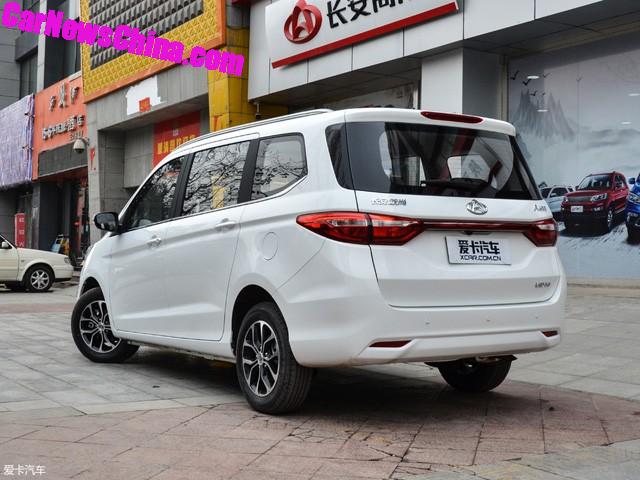
A few paragraphs back, I mentioned the Changan company was restructured and recapitalized in 2005. That provided the much-needed foundation for Changan’s foray into independent auto-making. Changan eyed a piece of the explosively growing domestic market. Its first product, the BenBen (loosely based on the 7th generation Suzuki Alto), hits the market in 2006 and is followed by an entire range of affordable but apparently well-made sedans. The sub-compact Yuexiang (Alsvin), the compact Zhixiang, the highly successful Eado, and the larger Raeton all follow in quick succession. Changan’s biggest achievement is picking up the SUV hype early on. By the mid-2010s, it has a complete line-up of crossovers, just as the hype takes off.
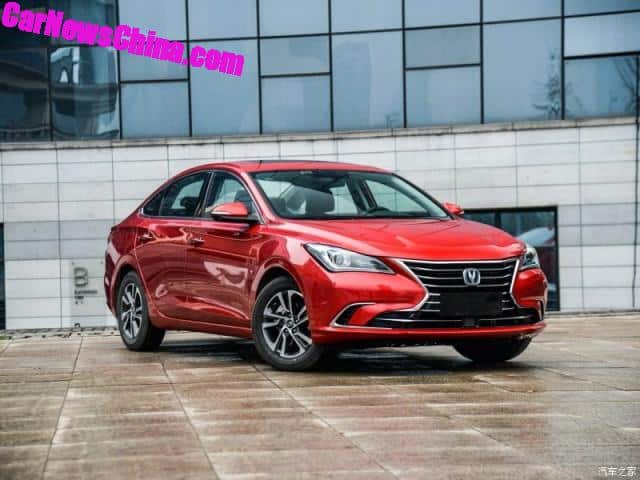
Many Chinese brands create a sub-brand for each market niche. Changan sells all its cars under its own name. It helps to strengthen the brand name. Since 2017 the company does market its products through four, more or less independent sales channels. The regular line-up of passenger cars is sold through Changan Automobile. Changan Oushang sells mainly low-cost SUVs and MPVs, aimed at a younger and less affluent audience. This comes close to a sub-brand, by the way. The Oushang cars have a different logo and badging. Changan Kaicheng is the commercial vehicle division and sells minibusses, vans, and pickups. Finally, there is a premium section called Changan UNI. Their first model, the good-looking UNI-T, has been off to a flying start.
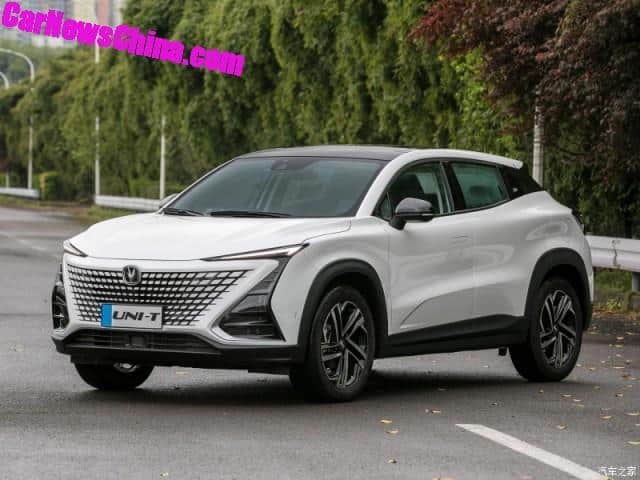
The secret of Changan’s success? Well, I can’t put my finger on it, but I guess it will be a combination of well-made cars and value for money.
What’s been missing so far is a competitive line of New Energy Vehicles. Changan has the occasional hybrid and electric car, but so far, nothing groundbreaking. They’re playing catch up, but even then, it seems they can do nothing wrong. Changan recently introduced the BenBen E-star, based on an almost obsolete Suzuki Celerio. Still, the car is making inroads in the “very cheap EV”-segment, dominated by the Wuling Hongguang Mini EV.
So the competition better watches out for Changan’s latest endeavor. They used to have a (yet another) joint venture with NIO to develop EV technology, but that company has produced nothing to speak of. Recently NIO mostly withdrew from the joint venture, and Changan will transform it for their upcoming premium EV. Late last year, they announced cooperation with Huawei and CATL form a yet unnamed new brand of high-performance EV’s, using the latest autonomous technology. Don’t be surprised if Changan conquers that segment as well.
China South Industries Group Corporation
Immense state-owned conglomerate with many dozens of subsidiaries. Traditionally engaged in the weapons and ammunition industry, but nowadays also quite large in cars (Changan) and motorcycles (Jialing). They also make robots, solar panels, and medicines, among other things.
Chongqing Changan Industry Group Co., Ltd. (CCIG)
Until the end of 2005, this company was the parent company of Chongqing Changan. Then CCIG transferred the automaker’s shares to China Changan. Changan Industry is currently mainly active in the defense industry (they make all kinds of bombs, among other things) and has a small division that is engaged in auto parts production.
China Changan Automobile Group Co., Ltd.
Since the end of 2005, the parent company of Chongqing Changan, China Changan, also owns the Hafei Industry, the merger of Hafei Motor and Harbin Dongan. Hafei Motor makes cars for Changan Ford. In addition to the listed companies, China Changan also has a long list of active parts manufacturing, commercial and financial services for the automotive industry, and logistics/transportation.
Chongqing Changan Automobile Co., Ltd.
The actual car manufacturer. The company is listed on the Shenzhen Stock Exchange, but China South Industries is, in practice, the controlling shareholder. In addition to the headquarters and main development department, Chongqing Changan also includes huge industrial complexes in Chongqing, where many of Changan’s cars are produced.
Nanjing/Hebei/Hefei Changan Automobile Co., Ltd.
Changan manufacturing sites outside of Chongqing.
Chongqing Changan Suzuki Automobile Co., Ltd.
Until 2018, this was a joint venture with the Japanese Suzuki. Suzuki has since withdrawn from the company and has become a production location for Changan. However, the company may, in any case, continue to make Suzukis for the Chinese market under license until 2023.
Baoding Changan Bus Co., Ltd.
Not mentioned in the above article, but in addition to passenger and commercial vehicles, Changan also makes buses. The exact history of this company is not entirely clear to me yet, but it seems that Changan has been making buses on a small scale from its beginning in the automotive industry. Since 2005, the division is detached as a standalone company and makes mainly school buses and buses for public transport.
Chongqing Changan New Energy Automobile Technology Co., Ltd.
Changan’s electric car development department. Changan NE also produces battery packs and electric motors in-house. Founded in 2008 and 2018, Changan NE attracted some strategic investors.
Changan also has another joint venture (not shown in the diagram) with BYD for battery development and manufacturing. I can’t say for sure which company within Changan is the partner yet, but I suspect it will be Changan NE.
Changan Ford Automobile Co., Ltd.
A joint venture between Changan and the American Ford Motor Company. This company makes Ford cars for the Chinese market. Besides global models passed on from the US or EU market, it also makes two special cars for China: the Escort and Taurus. The company had to contend with sharply declining sales in recent years, and in response, Ford is now also making several Lincoln models in China. The market reaction to this seems moderately positive for the time being.
Changan Mazda Automobile Co., Ltd. / Changan Mazda Engine Co., Ltd.
Joint ventures between Changan and the Japanese Mazda. The former company makes many Mazda models for the Chinese market. The second company, of course, makes engines. Derivatives of the Mazda engines can also be found in the cars Changan markets under its own name.
Jiangling Holding Co., Ltd.
Between 2004 and 2019, this was a joint venture of Changan and JMC Group to produce JMC cars and its own brand under the name Landwind. In 2019, startup Aiways took over a controlling share from both partners to obtain a production license to make their own cars. Before the acquisition, Jiangling removed the production of JMC cars from the joint venture, but Jiangling Holding will continue to produce Landwind’s.
Chongqing Changan Kuayue Automobile Co., Ltd.
Changan joint venture with Kuayue Group, a Chongqing-based real estate developer. The company makes low-cost commercial vehicles, often based on older Changan models.
Avita Technology (Chongqing) Co., Ltd.
Set up a joint venture between Changan and startup company NIO in 2018, focusing on developing and producing parts for electric cars. In 2021 NIO sold most of its shares to Changan, which intends to turn the company into a high-end EV maker with Huawei and CATL.
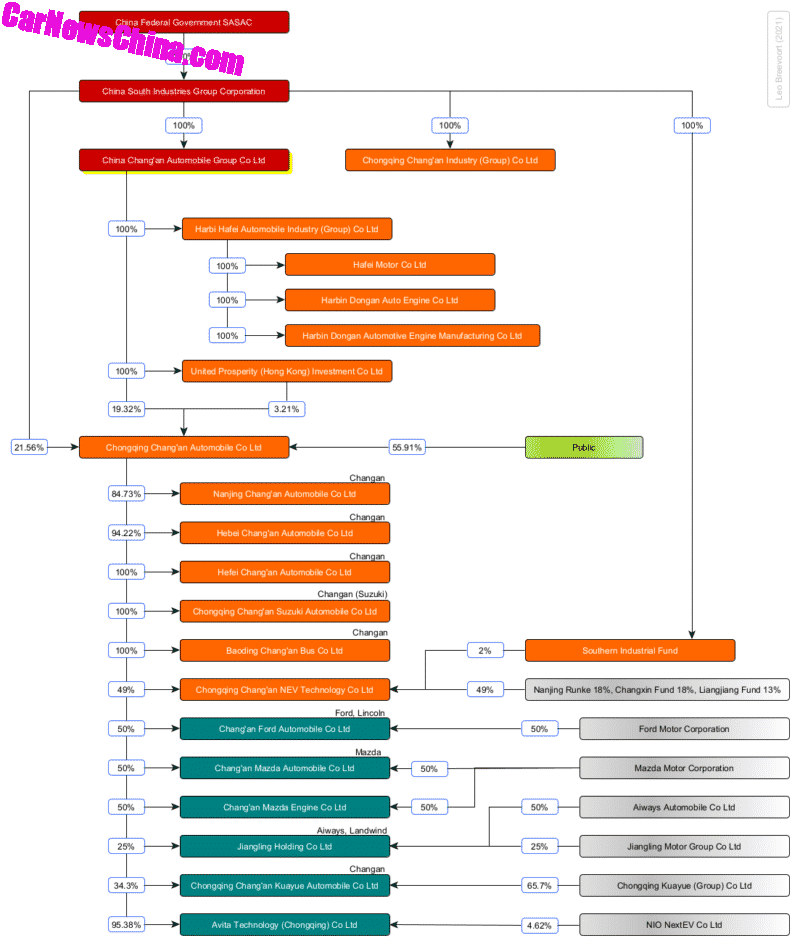
I hope you enjoyed today’s piece and please let us know in the comments if the length of the report is ok for you for one time read or if you prefer splitting into more pieces (or if you want event longer and this is not enough for you 🙂
The previous chapter of Automaker Profile:



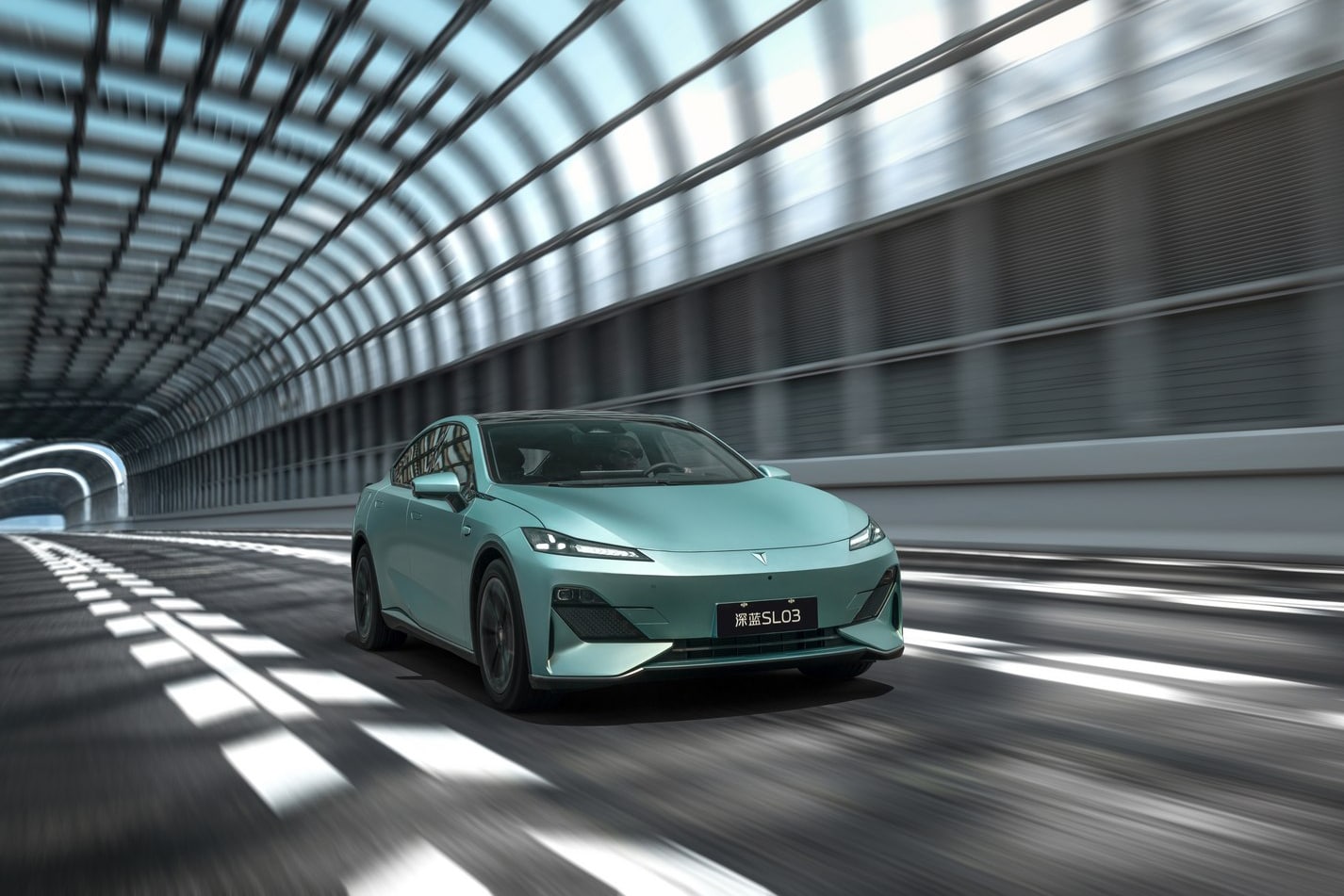

Great summary of Chang’ans sometimes convoluted history.
Regarding the Chang’an’s takeover of AVIC assets, like Dong’an Motor, see: http://www.dae.cc
Unfortunately this site is short on history, but going back to the pre-aquisition time, in 2004 the Beijing Times reported:
The Dong’an Mitsubishi Engine Co., Ltd. recently signed a technology transfer and engineering service agreement with Mitsubishi on the 4G 9 series engines.
This series became ubiquitous among emerging Chinese automakers, big and small.
Thanks!